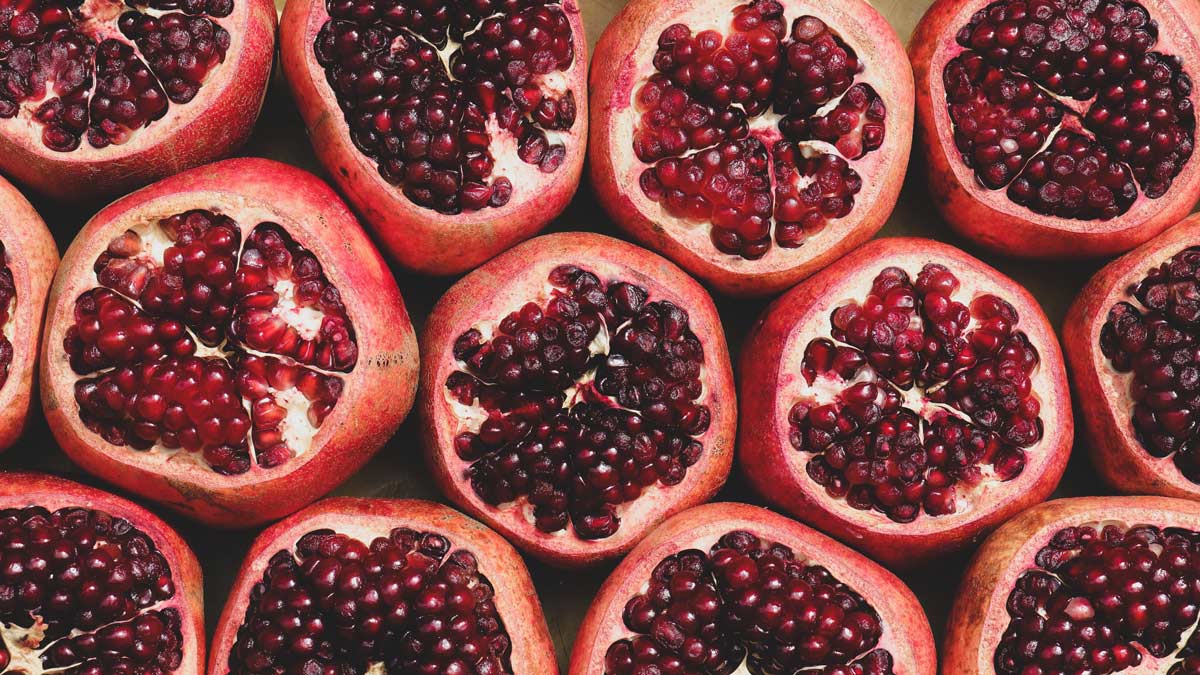Welcome to my blog!
Here you will find articles, health tips, and nutrition advice.

Thanksgiving Simple Swap Recipe Round Up
Thanksgiving Simple Swap Recipe Round Up!
The holidays bring added pressure and stress to our already overly busy lives. Take some of the pressure off this year by simplifying the Thanksgiving dinner menu. These delicious, healthy recipes will support your digestive and hormone health as well! Check out the Recipe Round up here and then keep scrolling for my tips to help manage holiday stress.
SWAP THIS
FOR THAT
Wild rice mixed with sautéed celery, mushrooms, onions, garlic, sage, and dried cranberries.
Roasted winter squash topped with coconut oil and maple syrup. Try sweet dumpling, delicata, or acorn.
Bonus: Boost your nutrition and add color with a vibrant green salad. Toss mixed greens with pine nuts, avocado, and pomegranate. Top with a simple vinaigrette of olive oil and balsamic vinegar.
Simplifying food is a great first step in managing holiday stress, but most of us need more.
Here are my top tips for staying calm and centered this Thanksgiving:
- Prioritize yourself FIRST.
Put yourself at the tippy top of your to-do list. Every day over the next week, spend 20 minutes on yourself, ideally first thing in the morning. Go on a walk, meditate, take a relaxing shower or epsom salt bath. Make a commitment to yourself to start your day with a little “you” time.- Check out these resources for meditation and yoga:
- 10 minute meditation for beginners:
Tara Brach Leads a Guided Meditation: Opening and Calming - 10 minute easy yoga for stress relief:
Yoga For Neck, Shoulders, Upper Back – 10 Minute Yoga Quickie - Free meditation app with guided talks and meditations:
https://insighttimer.com/
- 10 minute meditation for beginners:
- Delegate, delegate, delegate!
Can your partner make the turkey? Can a guest bring the dessert? Can your kids set the table (without making more work for you)? Let go of perfection and give someone else the opportunity to contribute. If you aren’t hosting dinner this year, that’s no reason not to delegate. Find tasks to off load onto your people. - Breathe.
Take 3 deep belly breaths when you first wake up, before eating, right now. Deep breathing relaxes our nervous system and sends fresh oxygen to our brain. - Take a media fast.
Most people complain of not having enough time this time of year to get everything done. Taking a break from media (TV, social media, texting, online surfing, any screens!) is a great way to free up your time. Bonus: Taking a break from screens will help your nervous system too! - Take a mini mental vacation at least once daily.
Read last year’s Thanksgiving blog article for step by step guidance. It only takes 5 minutes!

Top Tips for Seasonal Allergies
Spring is in full swing here in the northwest. As the weather turns warmer, plants everywhere are in bloom. If you are one of the many people who suffer from seasonal allergies, this time of year you may find yourself hiding indoors despite the beautiful weather.
Seasonal Allergies: Symptoms and Causes
Itchy eyes, a scratchy throat, a runny nose, sinus congestion—all are symptoms of seasonal allergies.
Allergies arise due to excess inflammation, poor gut health, and immune dysfunction. In order to treat allergies holistically, we need to address the underlying causes with some key steps.
Step 1: Correct Any Gut Imbalances
Hippocrates is famous for stating “all illness begins in the gut” and allergies are no exception! Gut imbalances, chronic infections, and poor digestion can all contribute to allergies. For many people, simply decreasing inflammatory processed foods and emphasizing whole foods is enough to correct gut issues. For others, a full gut healing protocol is key in correcting gut health. Work with a functional practitioner to implement a gut healing protocol.
Step 2: Decrease Inflammation
Allergies create an inflammatory state. Lower your inflammation with the following:
- Avoid dairy products during the peak of allergy season. Dairy tends to increase mucus production in most people and is naturally high in histamine.
- Follow a whole foods diet. Eat organic and local produce, high quality animal protein if you eat animals, and legumes, tubers, and healthy fats like olive oil and avocado. Think fresh and light: salads with fresh herbs, light spring soups, stir fries, wild caught fish. Avoid processed foods—they feed “bad” bacteria in the gut and generally raise inflammation.
- Eat more fish. Including low-mercury, wild caught fish in your diet twice per week, such as salmon, cod, and sardines gives you a boost in healthy omega-3 fatty acids. Vegetarian? No problem. Take an algae-based omega-3 supplement.
- Eat foods rich in vitamin C and quercetin such as broccoli, kiwifruit, citrus, onions, parsley, berries, and rose hip tea.
Use spices and fresh herbs. Herbs are full of healthy benefits and are naturally anti-inflammatory. Spices like turmeric and ginger help cool inflammation so eat them liberally. - Take out the sugar. Sugar, in any form, raises inflammation and lowers immunity. This step alone can dramatically improve allergy symptoms within just a couple days.
Step 3: Support Your Immune System
Allergies are a sign that your immune system is overreacting. Calming your immune system can greatly improve allergies, especially over time. Here are some simple tips to do this:
- Lower your stress, get extra rest, and include self-care daily. Stress increases inflammation, taxes the liver, and increases the overall load on your body, including your immune system. Lowering your stress is the most important tool to creating a healthy, allergy free body.
- Consider eating small amounts of local honey or bee pollen.*
- Heal your gut—70% of your immune system is housed in the gut.
Step 4: Create An Allergy Free Environment
Try to create an allergy free space, ideally your bedroom, to give your body some time to recover between exposures. Minimize pollen and other allergens with these steps.
- Wash your hair and change your pillowcases frequently.
- Use anti-allergy mattress and pillowcase covers.
- Use air purifiers, especially in the bedroom.
- Keep pets out of your bedroom.
- Diffuse eucalyptus and lavender essential oil at night. Try 3 drops of each in your favorite diffuser.
- Consider using a neti pot or other saline rinse system.
Additional Support for Seasonal Allergies
If you’ve tried all the above and are still suffering, consider adding some supportive supplements.
Please note, the following are for non-pregnant and non-lactating adults. Please consult with your medical practitioner before trying supplements.
- N-acetyl cysteine (NAC)
NAC is a precursor to one of the body’s most powerful antioxidants, glutathione. NAC supports liver detoxification and decreases phlegm associated with allergic rhinitis. A typical dose is 500-900mg three times per day. - Quercetin
Found in many fruits and vegetables, quercetin is a powerful anti-inflammatory with a host of protective functions. It balances the immune system and it lowers histamine, the chemical responsible for allergic reactions. Dose: 500mg daily. Please note, pregnant women should not consume quercetin due to possible side effects on the growing fetus. - Probiotics
Probiotics are a safe, easy addition to most diets. They add beneficial bacteria into the gut microbiome, improve immune function, and aid in gut healing. All probiotics are not created equal—be sure to look for one that has a variety of lactobacillus and bifidobacterium species.
Again, allergies are a sign of gut and immune dysfunction. If you regularly suffer from seasonal allergies, work with a functional nutritionist or other functional practitioner to find and heal your root cause.
*Honey should not be consumed by children younger than 1 year.
The information in this article is designed for educational purposes only and is not intended to be a substitute for informed medical advice or care. This information should not be used to diagnose or treat any health problems or illnesses without consulting a qualified health care practitioner. Please consult with a health care practitioner before making any lifestyle or dietary changes.
References for Seasonal Allergies
Links open in a new tab.
Fassio, F., Guagnini, F. House dust mite-related respiratory allergies and probiotics: a narrative review. Clin Mol Allergy 16, 15 (2018). https://doi.org/10.1186/s12948-018-0092-9
Jennifer C Dennis-Wall, Tyler Culpepper, Carmelo Nieves, Jr., Cassie C Rowe, Alyssa M Burns, Carley T Rusch, Ashton Federico, Maria Ukhanova, Sheldon Waugh, Volker Mai, Mary C Christman, Bobbi Langkamp-Henken, Probiotics (Lactobacillus gasseri KS-13, Bifidobacterium bifidum G9-1, and Bifidobacterium longum MM-2) improve rhinoconjunctivitis-specific quality of life in individuals with seasonal allergies: a double-blind, placebo-controlled, randomized trial, The American Journal of Clinical Nutrition, Volume 105, Issue 3, March 2017, Pages 758–767, https://doi.org/10.3945/ajcn.116.140012
Mlcek J, Jurikova T, Skrovankova S, Sochor J. Quercetin and Its Anti-Allergic Immune Response. Molecules. 2016; 21(5):623. https://doi.org/10.3390/molecules21050623
Zajac AE, Adams AS, , Turner JH. A systematic review and meta-analysis of probiotics for the treatment of allergic rhinitis. Int Forum Allergy Rhinol. 2015 Jun;5(6):524-32. doi: 10.1002/alr.21492.

Steps to Stellar Sleep
When Chelsea first came to see me, she was looking to correct some long term digestion issues: gas and bloating, constipation, and fatigue. While discussing her health history, it came to light that she didn’t sleep well—in fact, she hadn’t slept consistently well in years. Some nights she would lie awake in bed, her thoughts racing and unable to surrender to sleep. Other nights, she would be so utterly exhausted, she’d fall asleep initially, only to wake up in the middle of the night at 3am, unable to fall back asleep for hours. Still other nights, she would sleep mostly well, but would wake feeling groggy and tired—as if she’d barely slept at all.
Sound familiar?
Like most people who struggle with chronic sleep issues, Chelsea had developed some poor sleep habits as a result. She also had not given much thought to what is called “sleep hygiene” or habits and routines that aid in regular, restful sleep. Correcting poor sleep hygiene takes time, but eventually, with commitment and perseverance, Chelsea was able to dramatically improve her sleep. Armed with the same information, commitment, and a little patience, you too can improve your sleep!
Read on for my top sleep tips.
- Tip #1: Follow the light.
- The amount, timing, and kind of light we are exposed to on a regular basis has a profound effect on our sleep/wake cycle. One of the most important ways to correct a disrupted sleep/wake cycle is through morning light exposure. Get at least 20-30 minutes of natural light first thing in the morning, or use a light box.
- End of day light is also important. Ideally, go outside for 10-20 minutes near sunset.
- Morning light is the most important, but exposure at both morning and evening times is best.
- Tip #2:Avoid blue light 1-2 hours before bed.
- Turn off ALL electronics, screens (or use a night mode app), and use blue blocking glasses. Blue spectrum light inhibits melatonin production, a hormone that helps us sleep.
- Tip #3:Set up an appropriate sleep environment
- Make sure your room is COMPLETELY dark.
- Try sleeping in a cool room. Usually 68 degrees or cooler is ideal.
- No electronics in the bedroom.
- Avoid stress in the bedroom. Do not work, have hard conversations, watch scary movies, or read stressful news in the bedroom.
- Leave your bed for sex and sleep only—no reading or other activities in bed.
- Make sure your bedding is comfortable.
- Tip #4: Develop a bedtime routine
- Try to spend 1-2 hours doing the same thing in the same order each night. For example, brush your teeth, make a cup of tea, and read for 30-45 minutes before crawling into bed.
- Have a consistent wake/sleep schedule. Get up and go to bed at the same times each day, within 30 minutes.
- Tip #5: Go to bed earlier, ideally by 10pm.
- The hours between 9 and midnight enable deeper sleep with fewer dreams.
- Eat dinner earlier. Allow 3-4 hours between your last bite of food and sleep.
- Tip #6: No vigorous exercise after 2pm.
- Exercising late in the day spikes cortisol and ramps everything in your body up. Try exercising in the morning hours. Walking or gentle yoga later in the day is fine, especially if you find it relaxing.
Improving sleep hygiene takes time. After you make a change, it will likely take 10-14 days before you see any benefit, with the full effect occurring at the 1 or 2 month mark. If you try all of these for two months and still don’t see results, consider supportive sleep supplements, correct any gut imbalances that may be present, and work with a functional practitioner to guide you.

Love your Gut: Healthy Habits for Gut Health
Have you ever gone on a relaxing vacation and suddenly, poof! All your chronic tummy troubles magically disappear? Or, maybe you experience gas and bloating when you work through lunch or eat with your loud and boisterous family, but on a relaxing date with your bestie you have perfect digestion, even though you deviated from your usual way of eating? There’s a reason, and it might surprise you.
It’s not just about what you eat.
I see it over and over again. People who have been so focused on what they eat with little or no attention to how they are eating and how they are caring for themselves. We don’t live in a vacuum—who and what we surround ourselves with is impacting us all the time.
Our gut is governed by our state of being. When we are relaxed and present, our digestive system is able to do its job, breaking down our food and moving it through our body with ease. But when we are stressed, whether because we have a big work deadline coming up, a COVID scare, or because our darling newborn woke us up 8 times last night, our digestion suffers.
What’s a body to do?
Read below for my top 7 healthy gut habits:
- Practice Proper Chewing
Chew your food well, aiming for 30-45 chomps per bite. Chewing our food cues our body to prepare to digest. When we chew, we release salivary amylase, an enzyme that breaks down starches in the mouth. Chewing also tells our body to begin making and releasing digestive juices such as stomach acid and pancreatic enzymes. - Practice Mindful Eating
Be totally present when eating. Try this experiment: Turn on some relaxing music and set any distractions aside. Turn off all devices–televisions, phones, and computers. Set books and magazines aside. Sit down at a table with your meal and really practice being with your food. Take a few slow, deep breaths before eating. Smell your food. Take a bite, and savor the flavor. Try to spend at least 20 minutes enjoying your meal. - Practice Good Sleeping Habits
Get seven to nine hours of sleep; each night. While we sleep, a special set of digestion waves, called the Migratory Motor Complex, or MMC, gets to work. This is the street sweeper of the digestion tract, and it sweeps all the crud downward, preparing the body for a nice, healthy, and naturally detoxifying bowel movement the next morning. When we don’t get enough sleep, the MMC doesn’t have the time it needs to do its job properly. This can cause constipation or diarrhea, and an imbalance in the gut. In addition, lack of sleep can mess with hormones and neurotransmitters, which in turn alter how food moves through the body, causing gas, bloating, constipation, and/or diarrhea. - Exercise Regularly
Get at least 20-30 minutes of low intensity exercise, such as walking or yoga, daily Regular exercise keeps our guts moving and lowers stress. Try a yoga class (I love Yoga with Adriene: free online series), go on a walk or hike, take a bike ride, or go on a light jog. - Practice Self Care
Practicing self care for as little as 15 minutes daily can reduce stress and increase overall wellbeing which both directly and indirectly help your gut. When we are in the “rest and digest ” state, inflammation lowers, happy hormones increase, and our bodies are able to digest food with ease. Conversely, a state of “fight or flight” increases stress hormones and puts our body on high alert. This pauses digestion so our body can focus on dealing with the stress threat at hand. While helpful if you are running from a lion, this evolutionary mismatch means that many people’s digestive systems are on permanent hold as they deal with the daily, chronic stress of the modern world. - Curb Constipation
Constipation allows toxic waste to build up in our gut, causing gas, bloating and in some cases bacterial overgrowth. Read more on managing constipation here. - Practice Good Hydration
Proper hydration is essential for good gut health. Drink half your body weight in ounces daily. Be sure to include electrolytes from fruits and veggies for optimal hydration.
How will you support your gut today? Share in the comments below.
The information in this article is designed for educational purposes only and is not intended to be a substitute for informed medical advice or care. This information should not be used to diagnose or treat any health problems or illnesses without consulting a qualified health care practitioner. Please consult with a health care practitioner before making any lifestyle or dietary changes.
Post Holiday Detox – Is It Really Necessary?

Cleanses, detoxes, juice fasts–this time of year social media and the internet are flooded with the latest detox diets and protocols. After the glutton that usually ensues during the holidays, you may find yourself ready to reboot. But is a restrictive cleanse really the way to health?
For most people the answer is a loud, resounding “No!” Our bodies were built to elegantly detoxify all by themselves. Our liver, lymphatic, and digestive system are the queens of detoxification. In healthy individuals these beautiful systems don’t need fancy detox diets or cleanses to do their job. They are built to detoxify.
Now…you might be thinking, “But wait! I’m struggling with chronic gut inflammation, (or fatty liver disease, or autoimmunity, or…) Don’t I need more detoxification support?”
Detox support? Yes.
Crazy juice fast or other super restrictive diet? No.
While eating a whole foods diet coupled with targeted supplementation is extremely supportive of your detoxification pathways, what most people really need is quite simple: more water, more sleep, a balanced diet, and less stress. Period.
Now, if you want to up your nutrition game, read on for more tips. But don’t skip the water. Or the extra sleep. Or the self-care. It is just as important.
Top 5 Superfoods to Support Detoxification, Naturally
The foods below are full of antioxidants. Antioxidants aid the detoxification process by neutralizing free radicals that build up in the body. They also rid our body from environmental toxins (like flame retardant, pesticides, and BPA) that cause disease.
Add these superfoods to your daily routine to support the daily detox process.
- Pomegranate: This gorgeous fruit packs a powerhouse when it comes to detoxification. It is full of potent antioxidants, like ellagic acid, anthocyanins, and punicalagins making it a powerful anti-inflammatory agent. Add pomegranate seeds to a salad, or mix 2 oz of pomegranate juice with sparkling water for a refreshing spritzer.
- Green Tea: Green tea boosts liver detoxification by helping your body break down and eliminate toxins. It is also a powerful antioxidant. Sensitive to caffeine? Try this: Steep your tea for 60 seconds in near boiling water, then discard the water and keep the bag. Refill your cup with more near boiling water using the same tea bag. The majority of the caffeine is released in the first 60 seconds of steeping, but most of the helpful components remain.
- Leafy Greens: Greens like kale, collards, broccoli, brussels sprouts, bok choy, and napa cabbage release chemicals called glucosinolates, indoles, and sulfraphanes that all support and increase detoxification pathways. They are also full of fiber, which keeps you regular—a very important habit for detoxification which we will talk about in a future post.
- Berries: Who doesn’t love these powerful little gems? Berries are chalk full of antioxidants, vitamins, and fiber. Their rich, deep color comes from anthocyanins, a group antioxidant compounds that reduce free radicals and lower oxidative stress. In addition, berries are lower in sugar compared to other fruits, and high in fiber making them an incredibly nutrient dense food.
- Ground Flax Seed: Flax seeds contain a group of compounds called lignins, which helps your body bind and eliminate toxins (read—helps you poop!) Sprinkle a tablespoon in your oatmeal, add it to your morning smoothie, sprinkle on soup or salad. Make sure to keep flaxseeds in the refrigerator and try to consume freshly ground as they do go rancid rather quickly.
Test your detox!
Curious how well your detox pathways are running? Schedule a session with me for a detox assessment.
The information in this article is designed for educational purposes only and is not intended to be a substitute for informed medical advice or care. This information should not be used to diagnose or treat any health problems or illnesses without consulting a qualified health care practitioner. Please consult with a health care practitioner before making any lifestyle or dietary changes.
Conquer Constipation With These 7 Steps

Most people experience constipation at some point in their lives. Constipation is especially common in women and adults over the age of 60. An occasional bout of constipation is no big deal—but when constipation becomes chronic it can wreak havoc on your digestive system. Regular bowel movements are your body’s way of “taking out the garbage.” When we don’t have regular bowel movements, the toxins hanging out in our bowels get reabsorbed into the body, creating extra work for the liver and increasing the overall toxic load of your body. In addition, a constipated bowel is a breeding ground for dysbiosis, or an imbalance between the good and bad microbes in your gut.
I’ll be talking about toxic load and dysbiosis in future posts, but for now, how do you keep things moving?
Try these simple steps to conquer constipation:
- Stay hydrated. Drink half of your body weight in ounces every day. For example, if you weigh 180 pounds, drink 90 oz. of water daily. Coffee, tea, soda, and other beverages don’t count. Make sure you consume plenty of electrolytes in the form of fruits and vegetables to make sure your bowels are able to fully absorb water and stay hydrated.
- Include vegetables and fruits in your diet. ‘Nuf said!
- Eat fiber…but not too much. Fiber helps bulk up stool, making it softer and easier to pass. However, too much fiber can irritate the gut. Increase fiber slowly and be sure to drink extra water with additional fiber.
- Add ground flaxseeds or chia seeds. Add 1 tablespoon to a smoothie, sprinkle on top of your morning yogurt, or add to a salad. Make sure you increase your water (yup, I’m saying it again!) when adding flax or chia—add 4-8 oz of water for every 1 T. of flax or chia you eat.
- Use Magnesium Citrate. I recommend starting low and slow and increase incrementally until you find your sweet spot. Try taking at night before bed—magnesium is relaxing and will help with sleep. Start with 150-200mg per day, then increase until you have a soft, easy to pass bowel movement the next morning.
- Use proper pooping posture. Human anatomy is designed for eliminating in a squatting position. If you are super agile, you can hover over the toilet in a squat, or if you have a bathtub in your bathroom, you can turn sideways and put your feet up on the tub. For less flexible folks, try a toilet stool, such as this one.
- Prioritize Pooping. Take time to poop, every day, ideally in the morning. I know days get busy and it’s easy to ignore a “call to nature,” but do yourself a favor and take the time. Make it a positive experience. Grab a good book, practice some deep breathing, or hop on Instagram—give yourself some incentive to take a little “you” time in the potty. No urge to poop in the morning? Try anyway. If your body isn’t used to having time for elimination, it might take a while (days to weeks) for your body to get the message.
- Listen to your body. When you feel the urge, or as colon hydro therapist Laura Taylor calls it “a knock at the door”—listen! Stop what you are doing and head to the bathroom, even if it doesn’t feel urgent. Your bowels are worth the care.
Sometimes a gut is so out of whack that stronger strategies are needed. Work with a functional dietitian or other reputable functional practitioner to correct gut imbalances and get things moving again.
The information in this article is designed for educational purposes only and is not intended to be a substitute for informed medical advice or care. This information should not be used to diagnose or treat any health problems or illnesses without consulting a qualified health care practitioner. Please consult with a health care practitioner before making any lifestyle or dietary changes.
Did you find this information valuable? Share this article with a friend!
Boost Your Digestion and Health This Season With Warming Foods

As the weather turns cooler, those of us in the Northern hemisphere began to dream of soups, teas, and gingerbread. Like most things in life, our bodies are greatly affected by season changes. Gentle, warming foods like stews and soups and spices like cinnamon, ginger, fennel, and cardamom help “stoke” the digestive fire in our bellies, strengthening our digestion and our overall health. If you have a tendency to catch colds and flus, feel cold, or are just generally more fatigued this time of year, here are some tips:
- Limit raw foods, especially foods right out of the refrigerator.
- Increase cooked food.
- Eat soup! Soft, cooked foods like soup are incredibly nourishing and strengthening.
- Incorporate spices, especially warming spices like those listed above.
- Drink warming beverages, like chai tea and golden milk. Avoid drinking ice water and other iced beverages. Check out this recipe for golden milk from Claire Murray.
- Use warming self-care practices. Go on a brisk walk, take a hot bath, or snuggle on the couch with a cup of tea.

Creamy Butternut Squash Soup with Cinnamon
Fall Recipe: Creamy Butternut Squash Soup with Cinnamon
Serves 8
Ingredients
3 T. Olive Oil, divided
1 large onion, diced
2 stalks celery, diced
1½ pounds peeled and seeded butternut squash, cut into 1-inch cubes
4 garlic cloves, minced
1 ½ tsp cinnamon
1 tsp. ground ginger
¼ tsp. cloves
3 cups chicken or vegetable broth
1 ½ cups coconut milk
Salt and pepper to taste
Method:
- Heat 2 T. of olive oil in a large stockpot over medium heat. Add the onion and celery. Sauté for about 5 minutes until the onion begins to turn translucent.
- Add squash, cook for 7-8 minutes, stirring occasionally to prevent burning.
- Reduce heat to low and add garlic; continue cooking until all vegetables are a nice brown caramel color, about 10 minutes longer.
- Add cinnamon, ginger and cloves; continue to sauté until fragrant, about 30 seconds to 1 minute longer.
- Add broth; bring to a simmer over medium-high heat. Reduce heat to low and simmer, partially covered, until squash is tender, about 10 minutes.
- Allow to cool slightly (for about 15 minutes). Once cool, use an immersion blender to puree until very smooth, 30 seconds to 1 minute.
- Add enough coconut milk so the mixture is desired consistency.
Serve with a drizzle of olive oil, and more coconut milk as desired.
Conquer Thanksgiving Dinner Stress

We’ve all been there: the kids are running around screaming, the turkey still isn’t done, and your Great Aunt Eloise is following you around your suddenly too small kitchen giving unsolicited cooking advice. You are frazzled and harried, and wondering why on earth you agreed to host Thanksgiving dinner? Your blood sugar is crashing and the next time someone asks, “When is dinner going to be ready?” you are going to punch them with your oven mitt-clad fist.
Sound familiar? You’re not alone.
Instead of throwing that turkey baster at someone’s head, hand off the dinner preparation to someone trustworthy (not your Aunt Eloise), and follow these steps to give yourself a break.
I call this a Mini Mental Vacation:
- Find a quiet space, as free of distractions as possible. (This might mean locking yourself in the bathroom, stepping outside, or heading to the garage).
- Close your eyes. Feel your feet on the floor. Take some slow, full deep breaths, letting the exhales be longer than the inhales.
- Imagine yourself on vacation. Where would you like to be? A warm balmy beach? A moist forest full of birdsong? Getting a massage? Engage your senses as much as possible—what sounds and smells are around you? What is the air temperature like? Continue to breathe deeply.
- Stay as long as you like/can.
- Repeat throughout the day.
Taking breaks is hard to do, especially when we are on a timeline and/or there’s a lot of chaos in our house. But you will be more efficient, grounded, and happy if you can give yourself a tiny bit of space. Give yourself a break, literally! You are worth it.

Person enjoying relaxed state of mind with Mini Mental Vacation